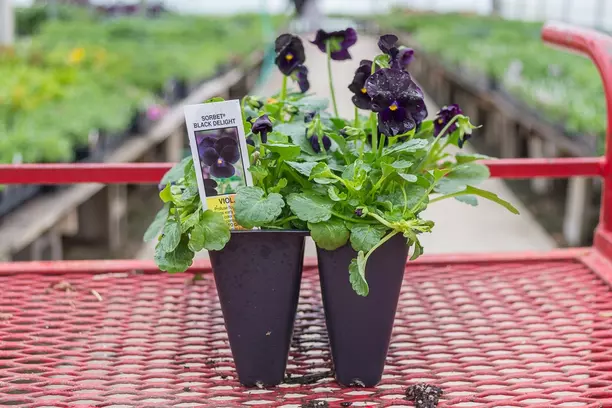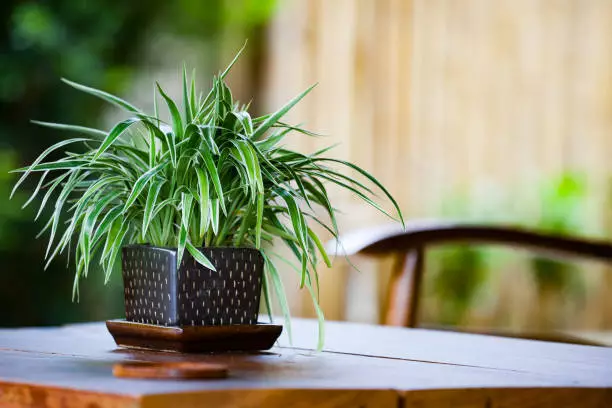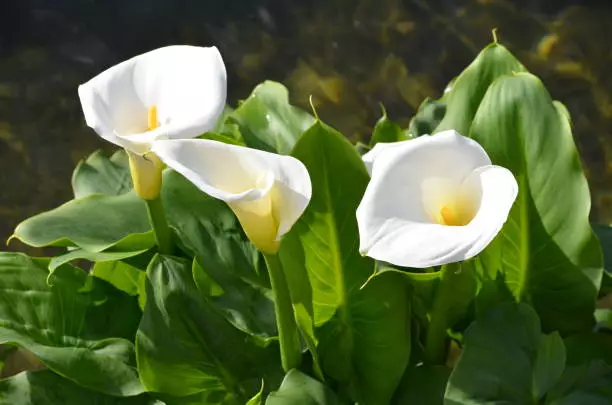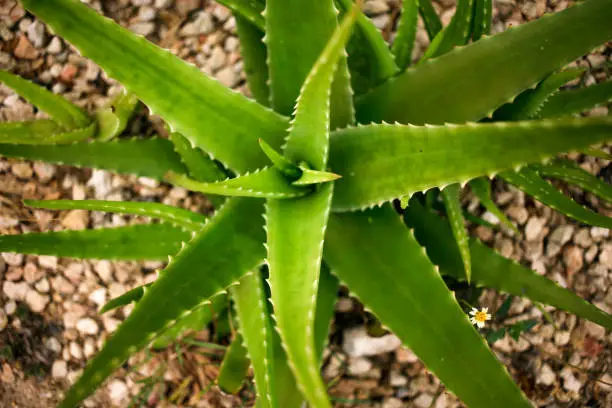ZZ plants (Zamioculcas zamiifolia) are sensitive to their watering needs and can easily grow unhealthy if you don’t provide the right amount of moisture for them. Overwatering can lead to root rot and yellow leaves while underwatering affects nutrient uptake and photosynthesis. But how often should you water your ZZ plant?
The rule of thumb is to water your ZZ plant 1 – 2 times every month depending on the growing conditions. Water the plant infrequently and let the soil dry out between waterings especially during winter, in low light, and highly humid conditions when the pot retains more water than usual.
Keep in mind that factors such as the watering frequency, amount of water, and the method of irrigating the plant determine the health of your Zanzibar gem.
How often should you water a ZZ plant?
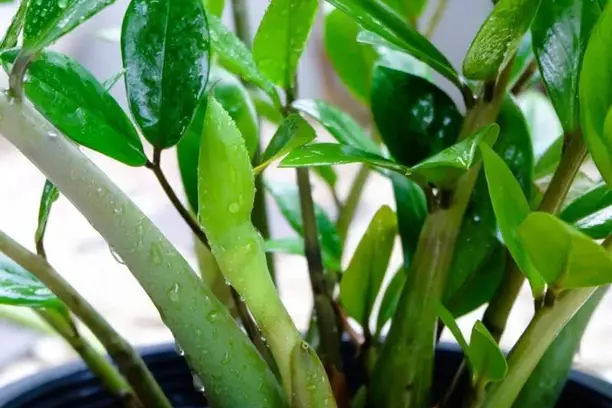
ZZ plants prefer infrequent watering like once a month to remain healthy. Water the plant minimally during winter or when growing in low light conditions. Let the soil in the pot dry out between waterings to prevent overwatering or underwatering your ZZ plant.
One mistake people with houseplants often make is assuming ZZ plants need frequent watering. Like all succulents, ZZ’s don’t need daily or weekly watering to remain healthy. They are adapted to low-to-medium light and infrequent watering just like in their natural habitat of Eastern Africa.
Factors that affect the watering schedule
Factors influencing watering the ZZ plant frequency include:
Seasons
- Summer: During this season, leaves are more active, facilitating the photosynthesis process and consuming a lot of water. Therefore, Water it after two weeks because the plant’s absorption and evaporation rate are high. But if temperatures in your region go as high as 80° F, water it every 5-7 days to compensate for the high evaporation rate.
- Winter: Water it every three weeks because the plant has gone dormant. The freezing temperatures compromise its water intake properties. Watering every week during this period might induce waterlogging, making it susceptible to disease infestation.
- Spring: Only water it before leaves start shriveling or turning yellow, and the soil turns completely dry if you live in a hot and dry region.
Flowering season: ZZs planted outdoors are likely to flower, hence using more water than usual. However, the flowering season doesn’t mean you should overwater. Only water it when the top two inches are dry.
The size of your ZZ plant
Watering frequency for larger and smaller plants varies. The larger the plant, the more water it needs because its physiological needs are heightened.
Temperature
ZZs thrive better in temperatures ranging between 55°F and 80° F. In temperatures lower than 55°F, water the plant less frequently than usual as the plant’s physiological activity is lower.
If the temperatures exceed 80° F, increase your watering frequency to every five to seven days. High temperatures lead to increased transpiration (water loss by the plant) and evaporation, which causes the soil to dry out faster than normal.
Humidity
The ideal humidity for ZZs should range between 40% and 50%. As the air around your home feels drier, the evaporation rate increases. Because your plant needs water molecules in the air, it’s imperative to check humidity levels in your home to determine your watering frequency.
Generally, in high humidity environments, reduce the watering frequency to avoid keeping the soil soggy. However, when the humidity is very low, increase the watering frequency a little bit to counter the effects of the increased rate of water loss.
The type of potting mix
ZZ plants thrive well when grown in a cactus potting mix or a medium that’s made of perlite, coarse sand, and compost. Such a potting mix drains faster and helps prevent overwatering in Zanzibar gems.
If the potting mix drains properly, irrigate the ZZ a little more frequently, preferably every two weeks in summer, spring, and fall. However, space out the watering a little more in winter and provide water only once every 3 weeks. Always check the first two inches of topsoil and water your plant only when the soil is completely dry.
Type of pot
Porous pots like terra cotta are permeable, making it easier to balance oxygen and water through their walls. They hardly lead to overwatering.
Nonporous pots like plastics and ceramics have poor draining properties. If your plant is growing on these pots, ensure you water it when the soil is completely dry and do it from the bottom up as opposed to pouring water from the top into the pot
Size of the pot
A ZZ plant in a larger pot with more potting mix requires more watering to allow its rhizomes to take in water. On the other hand, smaller pots make it easier for rhizomes to access water. Therefore, ensure that you give it minimal watering.
How much water do ZZ plants require?
The amount of water your ZZ plant requires depends on the size of the pot and plant, the type of potting mix, and the season. However, as a rule of thumb, water the plant once every 2-3 weeks with as much water as needed to keep the soil moist.
While ZZ’s hate overwatering, giving them little water at a time regardless of the season is the easiest way to kill them. The watering should be so thorough that excess mineral salts in the potting mix get washed away instead of building up. This method also helps roots to get enough moisture for storage per watering.
Here’s the best way to water your ZZ plant:
- Add water using a watering can (for indoor plants) or a gardening hose (for outdoor plants) slowly until the potting mix gets soaked up. Avoid sprinklers since they can spread water onto the leaves, making them susceptible to diseases.
- Wait for a few minutes before adding more water until it drains off in the pot’s holes.
- After 10-15 minutes, drain off excess water from the saucer to prevent the potting mix from reabsorbing the water.
RELATED: BEST LOW-LIGHT INDOOR PLANTS
How do you know when a ZZ plant needs water?
Environmental conditions, the age of your plant, and potting mix determine when your ZZ plant needs water. Other factors signifying dehydration in ZZ’s include:
The two inches of topsoil feel completely dry
Poke your finger into the potting soil about two inches down. If it feels damp, the plant doesn’t need any water. Alternatively, poke your finger through the bottom drainage holes. If it feels completely dry, give it some water.
To get accurate results regarding the soil moisture level, use a soil moisture meter such as the XLUX Soil Moisture Monitor to measure the amount of moisture available for your plant.
Simply insert the probe end into the soil to be buried 4/5 of the way deep. Be careful not to force it down. Wait 60 seconds, then check the moisture level reading in the display window. The results will tell you if the soil is completely dry and your plant needs watering.
Droopy or crispy-looking leaves with brown edges
If you haven’t watered your Zanzibar gem for more than a month and notice the leaves looking droopy, crispy, and browned, that’s a sign of dehydration. The ZZ plant leaves turn yellow before transitioning to brown edges when underwatered. However, if the yellowing on the leaves is widespread, it means you’ve overwatered it. In that case, dry out the soil before re-planting your ZZ.
RELATED: HOW TO SAVE ZZ PLANT LEAVES FROM TURNING YELLOW
Lightweight pot
While lifting the pot to check its weight might not accurately determine if your plant needs watering, it is a perfect alternative to poking your fingers into the soil. If you aren’t sure about the pot’s weight, when it has moisture or not, get a weighing scale. Remember, as your plant keeps growing, so does its weight, which can be a bit misleading.
Dry rhizomes
Dehydration starts from the rhizomes, spreading further to the stems and leaves. Should the rhizomes feel dry and brittle, it’s time you put them in a glass of water for a few hours.
When to water your ZZ plant
Proper watering of ZZ plants relies on the golden rules of watering below:
- Check the soil for complete dryness before watering. Stick your fingers 2 inches down the soil or use a soil meter to check if the soil has moisture or is dry
- Though ZZ’s can tolerate drought for days, it’s essential to keep its soil evenly moist, not saturated or soaking level, to avoid root rot.
- Water it early in the morning(6 am-10 am) or late evening (4 pm-6 pm) when there is minimal sun, hence a low evaporation rate. Watering during this period allows water to access deep into the roots without being evaporated.
Can you bottom-water ZZ plants?
Bottom-watering is the best method since it ensures water from splashing on ZZ’s leaves, preventing it from being susceptible to pathogen infestation.
Here’s how to bottom water your Zanzibar gem:
- Get a water pan or saucer where your pot will sit
- Place the plant inside the pan and add water slowly. Continue adding water until up to half of the pot. The soil will absorb the water through capillarity action.
- Wait until the soil stops absorbing the water.
- Remove the pot from the pan after all the water drains out. Place it in an elevated place (display area) with low-to-medium light.
References:
[1] Michigan State University, Department of Horticulture- ZZ plant is an easy tough indoor use
[2] UConn Home & Garden Education Center- ZZ Plant
